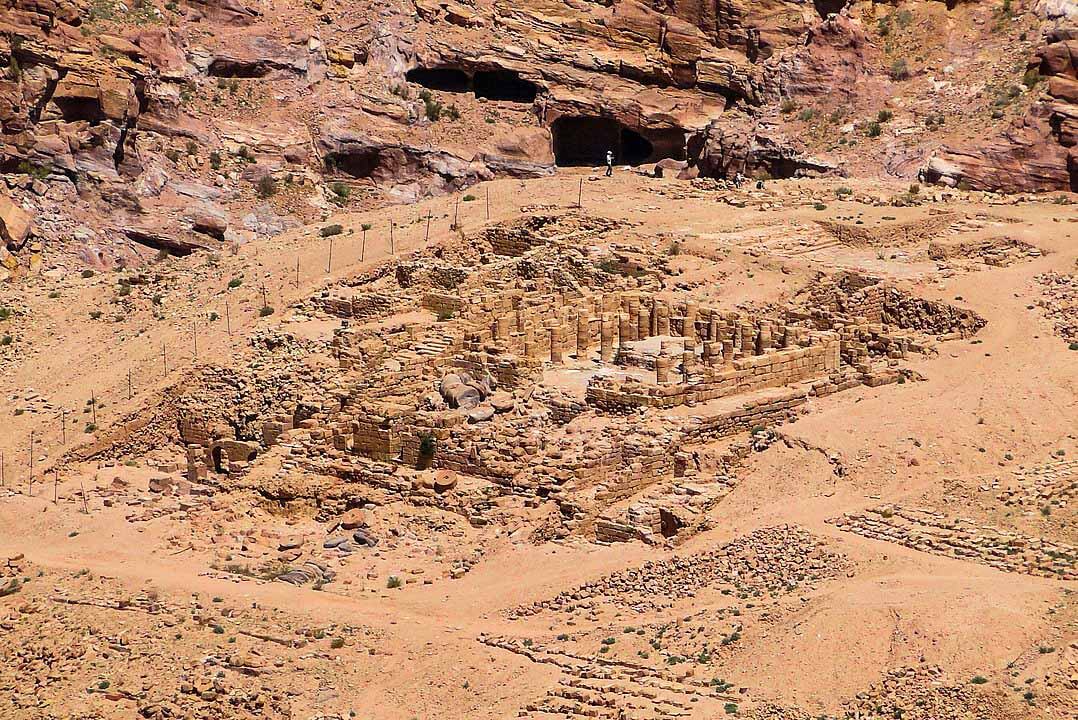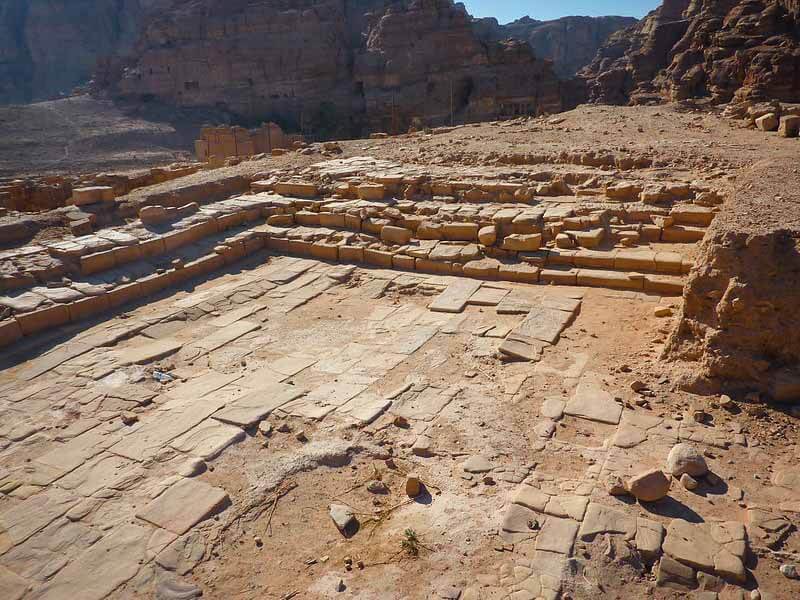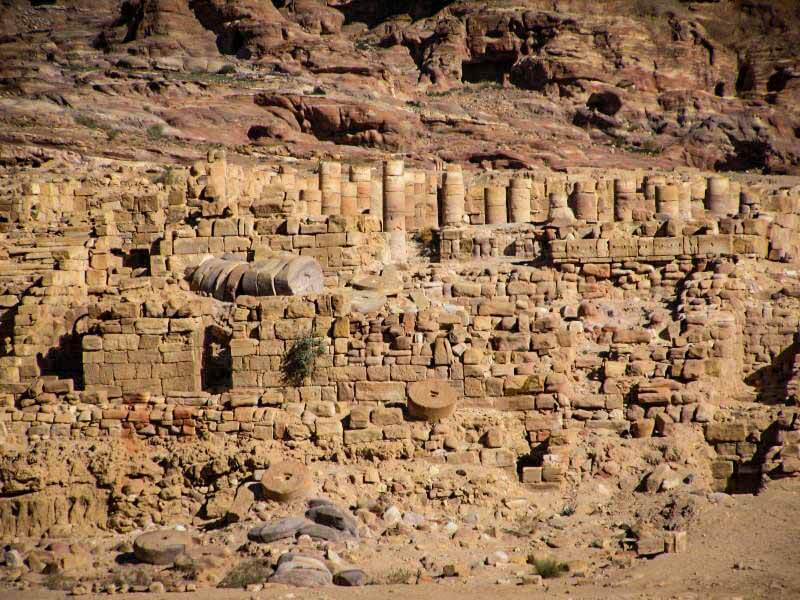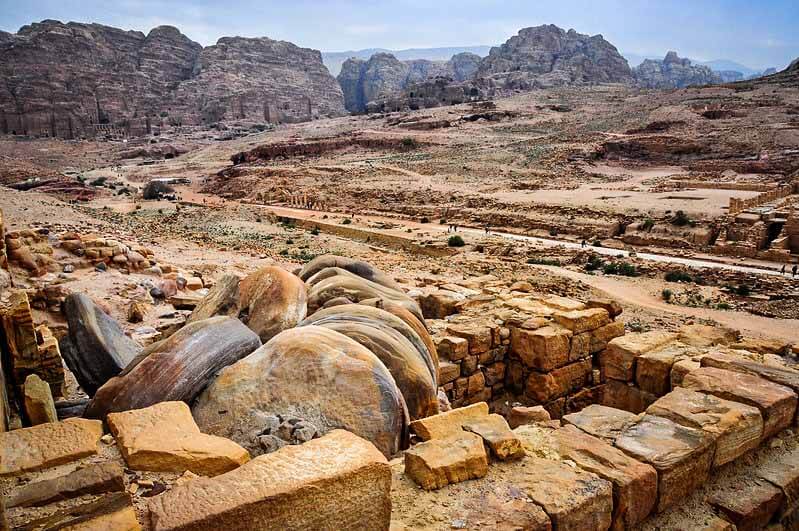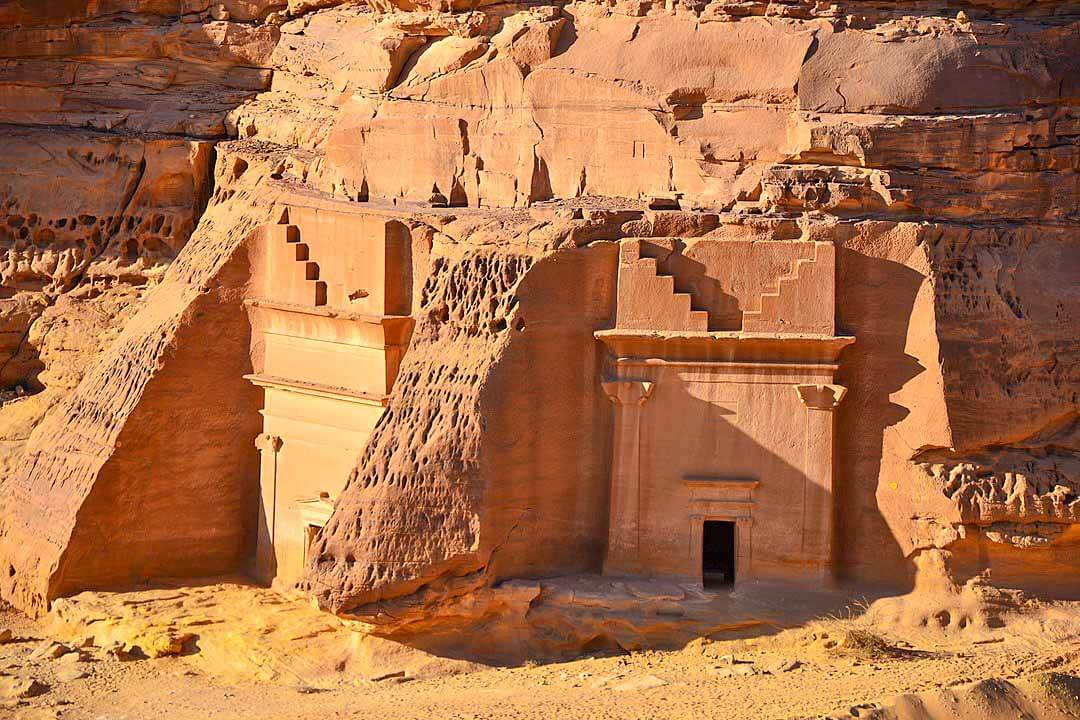Petra, Jordan
Coordinates: 30.330427, 35.442574
The Temple of the Winged Lions is a large Nabatean temple complex located in Petra, Jordan, and dated to the reign of King Aretas IV (9 BCE–40 CE).
The temple is located in Petra’s so-called Sacred Quarter, an area situated at the end of Petra’s main Colonnaded Street consisting of two majestic temples, the Qasr al-Bint and, opposite, the Temple of the Winged Lions on the northern bank of Wadi Musa.
The temple is likely dedicated to the supreme false goddess figure of the Nabateans, but the exact identity of this goddess is uncertain.
It was ultimately destroyed in the massive earthquake of 363 CE.
Analyses of the architecture, goods, and practices associated with the Temple of the Winged Lions afford valuable insights into Nabataean religion, economy, and culture.
Inscription found at the temple offer a glimpse into the details of Nabataean law and order associated with religious ritual, worship, and the allocation and generation of temple revenue.
Temple of al-lat & al-Uzza
The temple was arguably dedicated to the false supreme “goddess” of the Nabateans, as suggested by an inscription found on an “Eye Baetyl” in the temple, reading: “the goddess of… son of…”.
The “Eye Baetyl” or “Eye-Idol” is one of the most iconic items recovered from the tomb, a square limestone stele decorated with two eyes and a long nose, representative of the goddess and most likely utilized as an object of worship.
The face is thought to belong to either Allat, Al-‘Uzza, Atargatis, (a Syrian fertility goddess) the Greek Goddess Aphrodite or the Egyptian Goddess Isis.
The implications of the goddess’s identity leaves much room for speculation. A temple designed for worshiping Al ‘Uzza, a pre-Islamic goddess closely associated with water, would allow for insight into both the religious aspect of water management and water’s relationship with Nabataeans in Petra.


